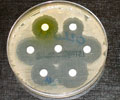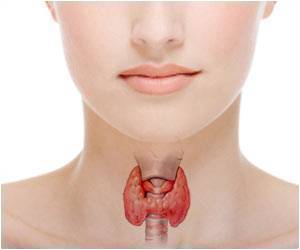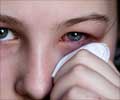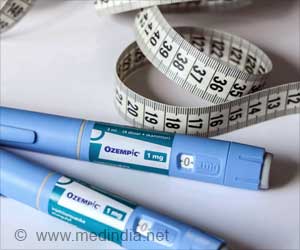- Sushi, a global favorite, carries hidden health risks due to Aeromonas bacteria
- Despite mild processing, sushi can harbor pathogenic bacteria, posing a health risk, especially to vulnerable populations
- Additionally, these bacteria may spread antibiotic resistance, necessitating a holistic approach to combat the problem
While indulging in this delectable cuisine is a common practice, it's essential to acknowledge that, as a general rule, dining on sushi in Norway is a safe experience. However, beneath the savory allure of sushi lies a health hazard that affects individuals and society on a broader scale (1✔ ✔Trusted Source
Whole genome sequence analysis of Aeromonas spp. isolated from ready-to-eat seafood: antimicrobial resistance and virulence factors
Go to source).
The Sushi Health Warning
"Bacteria in sushi, sashimi, and cold-smoked fish products can pose a risk to people who consume these foods regularly, particularly those with weakened immune systems, children, and the elderly," warns Hyejeong Lee.Dr. Lee, who recently completed her Ph.D. at the Department of Biotechnology and Food Science at NTNU, conducted extensive research on various strains of Aeromonas bacteria found in minimally processed seafood. Without adequate heat treatment or antibacterial methods, the risk of bacterial proliferation surges.
Aeromonas Bacteria and Antibiotic-Resistant Threat
Dr. Lee's research primarily focused on seafood products readily available in the Norwegian market. Her findings revealed that the mild processing applied to sushi, sashimi, and cold-smoked fish fails to prevent the growth of Aeromonas bacteria. Furthermore, many of these Aeromonas variants are potentially pathogenic, often accompanied by several risk factors.While the likelihood of falling ill due to Aeromonas is relatively small for healthy individuals, Dr. Lee stresses the need for the food industry to pay greater attention to these bacteria in terms of food safety.
Beyond individual health concerns, the broader implications of Aeromonas bacteria are of paramount importance. These bacteria in the sea frequently exchange genetic material with other bacteria, which becomes especially problematic when the genetic material originates from antibiotic-resistant strains.
"Some strains of Aeromonas can also spread antibiotic resistance from one type of bacteria to another. Consuming seafood contaminated with resistant bacteria provides a potential pathway for these bacteria to move from marine environments to humans," concludes Dr. Lee.
Antibiotic-resistant bacteria are a growing global issue. Although resistant bacteria don't inherently cause more diseases, they pose a challenge because not all antibiotics are effective against them. In severe cases, no antibiotics work at all.
Combating the Antibiotic-Resistant Bacteria Threat
Anita Nordeng Jakobsen, an associate professor at NTNU's Department of Biotechnology and Food Science, emphasizes the importance of adopting a comprehensive approach to tackle the spread of antibiotic-resistant bacteria. This approach should encompass animal and human health, food production, and environmental factors to enhance public health.Microorganisms are transmitted between animals and humans through food and the environment, making reduced antibiotic usage alone insufficient to prevent bacterial proliferation.
Preventative measures include systematic monitoring and sampling in production environments, identifying effective monitoring indicators, implementing actions when multidrug-resistant bacteria are detected in animal groups, vaccination, and educational efforts within the global food production industry.
Strict regulation by authorities stands as a crucial step in addressing the antibiotic-resistant bacteria problem. Nevertheless, individuals can make a meaningful impact by choosing raw products from countries with stringent antibiotic use regulations, such as Norway.
Norway leads the way in limiting antibiotic use in both aquaculture and livestock farming, setting an example for a world where the excessive use of antibiotics remains a concern, particularly in Southeast Asia and other regions.
To conclude, Sushi itself does not directly cause antibiotic resistance. However, there is a concern that seafood, including some types used in sushi, can potentially carry Aeromonas like antibiotic-resistant bacteria.
Reference:
- Whole genome sequence analysis of Aeromonas spp. isolated from ready-to-eat seafood: antimicrobial resistance and virulence factors - (https://www.frontiersin.org/articles/10.3389/fmicb.2023.1175304/full)
Source-Medindia
















